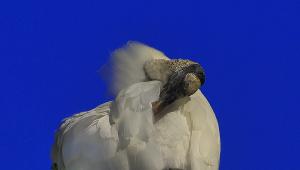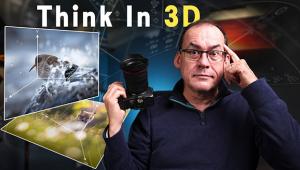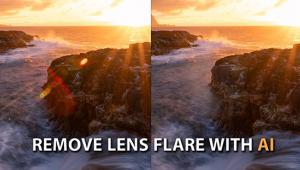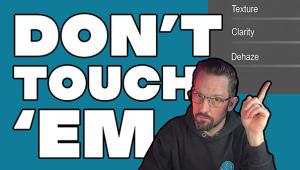CPAC Imaging PRO Version 3.0; Quick, Easy, Good—And More! Page 2
Step 2 is called the "Finishing" step. Somewhat oddly, the Retouch, Brush, and Nose Line tools are now not available to you, but you can click a "Back to Step 1" button if you'd like to access them further. Now is the time to use the Stamp, Sponge, Dodge, Burn, Repair, and Pencil tools. The Repair tool is like Photoshop's Healing Brush. Use the bracket keys to change brush size, use the Alt key to select an area, then use the Repair tool to brush over it. The Sponge tool is also unique. It's a brush-type tool that you can use to selectively saturate or desaturate certain parts of the image. Make sure to set Opacity first--you can't adjust it later. The Burn and Dodge tools are pretty straightforward, as is the Line tool. The History brush can be used to return the image to its original state or you can make it to taste using the Opacity slider. Did I mention there's also a Levels tool with an "Auto Levels" box? Wonder where they got that idea!
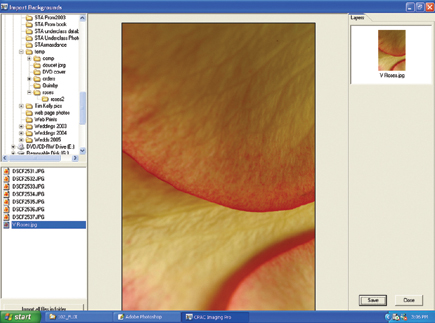 |
|
|
Save The Image
When you're finished with the retouching you have the option of saving
as a JPEG or TIFF file (that's it) or sending to CPAC the Photoset software
for package printing and other options if you've installed their appropriate
software. That's beyond the scope of this review but may be worth looking
into if you are doing your own printing. I'm also not going to go into
detail about colorizing images or changing someone's clothing, but can
see where both could be very useful.
I'll just note that the colorizing could be very useful if you do copy
and restoration work (I don't) as an amazingly simple way to colorize
a black and white image. The clothes changing feature could come in mighty handy
when some high school senior guy didn't wear a suit and his mom wanted
him to. You can add your own suit and tie combinations or women's jackets
and blouses to the menu for more variety and to suit your style.
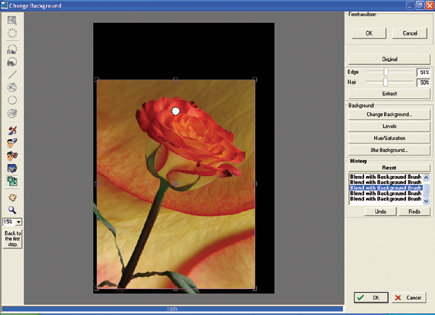 |
|
|
Now that we've looked at the program, where exactly does it fit in with
the current state of software applications out there? First, it does not, and
is not marketed as an alternative to Photoshop. Photoshop has many more features
and the
all-important layer, masking, and sizing aspects. CPAC calls itself a "retouching
software for professionals" and says that it produces "outstanding
results in just minutes...with an easy to learn, operator-friendly format."
I'll agree with that. I have the Kodak retouching plug-in for skin smoothing
that I paid $100 for, and CPAC's software is easily as good as that, plus
it does so many other things. All in all, it's a valuable tool for busy
professionals who put a high priority on their time or who want to show employees
how to quickly and easily retouch files.
Adventures In Green Screen
As mentioned, one of the reasons I was intrigued by this program was its ability
to change backgrounds. So I bought myself some "Chroma Key" green
cloth and proceeded to get to work. I learned a lot. First, all my research
indicated you need to light the background evenly. If you don't, you'll
be picking out creases and wrinkles. I figured I'd outsmart everybody
with my genius IQ and not light the background independently, figuring my studio
fill light would be very even. It was. Did it work? Not all that well.
Even though the green was a unique color in the images I experimented with,
it was not bright enough to give me an edge against the contrasting color. I
tried using the "Color Range" tool in Photoshop and couldn't
even get it to select pixels. The CPAC software did a much better job of it
and even has tools to fine-tune the adjustment. A great feature is that you
can import your own backgrounds and then change the color and saturation of
them independently of the main image. I went back to the drawing board with
a smaller subject (flower) where I could easily light the background and results
were much improved.
 |
|
|
For more information, contact CPAC Imaging, 5440 Oakbrook Parkway, Norcross,
GA 30093; (800) 262-9333, (770) 448-0250; www.cpacimaging.com
and www.cpacasia.com.
They will send CDs good for a 30-day trial with a $500 deposit.
Steve Bedell holds Masters and Craftsman degrees from the Professional Photographers
of America. To subscribe to EPhoto, the online newsletter for professional and
advanced amateur photographers, contact Bedell via e-mail at: steve@stevebedell.com.
- Log in or register to post comments






